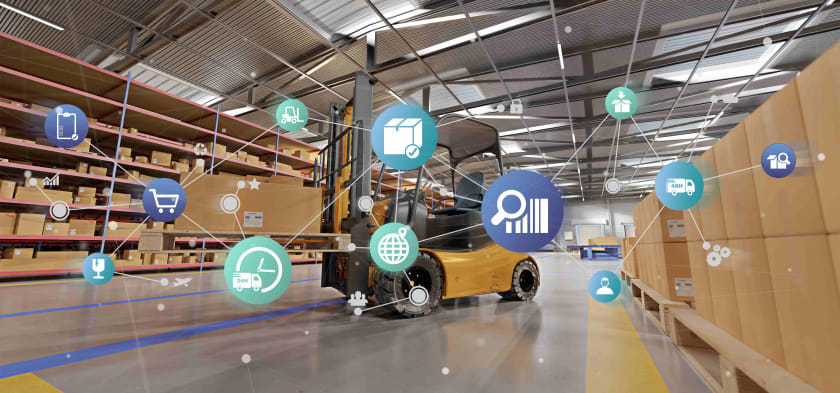Supply Chain Integration | Levels & Barriers



Summary: As fashion brands move out of their locations to source materials and suppliers and sell their products, supply chain integration has become essential to make such a vast network of resources productive and effective. But it is not an easy task given the many hurdles. Here are the different barriers and the levels in supply chain integration.
Supply Chain Integration is a complex amalgamation of business processes with automated communication channels. For large-scale clothing manufacturers, especially for those with a large number of partners and sourcing locations, supply chain integration is inevitable. Setting it up effectively requires a lot of effort on the part of different parties spread over a vast and diverse geographical spread. This integration, therefore, runs into barriers that need to be removed and tackled.
To avoid unnecessary time and effort, different levels of supply chain integration streamline the internal processes and help in their alignment with those of the stakeholders in the supply chain. Before we take a look at the different levels and barriers in implementation, let us find out what supply chain integration is.
What is supply chain integration?
Supply chain management is a multi-layered process. To be effective, you need to have multiple departments from various departments working in close cooperation like cogs synced in a perfect alignment. Supply chain management makes sure that all departments in a business are working together in perfect harmony.
Supply chain integration is about making an organization's supply chain more effective and efficient with cross-functional communication and monitoring channels. It is about making sure that the supply chain aligns with the business strategy and can allow modification in procurement and shipping in real-time to optimize business operations for better ROI.
Levels of supply chain integration and what they entail

Primarily, supply chain integration has three different levels. These three levels subsume the other phases critical to integration.
- Strategic: Supply chain integration is a managerial call. As a policy-level decision, it would necessarily involve business management. This is where the outline for the integration gets ready. The business managers have to decide on the scale of integration based on the cost it would incur. They will consider market trends, customer preferences, and moves by the competition to design their integration process. This involves long-term planning and resource allocation.
- Tactical: This is the level where the action plan gets drafted. This is the middle tier of an organization that heads the vast procurement, communication, and logistics channels of a fashion brand. The managers bring their expertise and experience into the picture to make the policy doable. They introduce the integration processes and coordinate with each other for the alignment of roles and responsibilities.
- Operational: This is the final level or the level of implementation. These are the operational heads who make the employees, suppliers, and other stakeholders aware of the changes in a clothing organization for them to fully participate in the process. This necessarily involves a feedback system which is used to finetune the supply chain integration for predictive and prescriptive analysis and follow-ups.
What barriers do you need to overcome?
Supply chain integration can be a time-consuming and resource-intensive task for companies. But lack of such integration will result in highly isolated companies that are unable to take advantage of economies of scale or better business practices that are being employed by competitors. Here are a few of the most commonly faced barriers to the integration process.
1. Lack of knowledge or access to technology

Technology plays a major role in supply chain integration. Global fashion brands are using AI and fully-automated communication and tracking systems. Smaller businesses may not have access to such technologies. They can hire resourceful aggregator platforms that can deliver on the integration at optimized costs.
2. Cost of integration
Supply chain integration is cost-intensive. It requires capital investment and recurring managerial costs. Affordability has to be pictured before committing to an integration process.
3. Lack of information sharing
Supply chain integration requires the cooperation of both the supply-side businesses along with internal departments. But suppliers can be wary of being monitored or sharing information that can be crucial to their business staying competitive.
4. Demand distortion-bullwhip
A bullwhip effect sets in when the procurement is based on inaccurate data that is inconsistent with consumer demands. This results in distorted information sharing which can negate the whole process of supply chain integration.
5.Lack of inclusivity
Most businesses including clothing labels make the mistake of focusing on their internal growth and end up sidelining the customers and suppliers. This results in an information gap and mistrust which can be addressed by making the supply chain transparent and inclusive.
Supply chain integration isn't easy, but it's worth it

Earlier, there used to be logistics, but now there is supply chain integration, which is logistics 2.0: an evolved form of inventorying, warehousing, and shipping, which now clubs the whole procurement and last-mile delivery processes into one automated communication and monitoring platform. Connecting supply chains is not an easy task. From picking reliable suppliers to mitigating the impact of disruptions and making last-mile deliveries, supply chain integration makes it possible through a robust communication network.
Fashinza can help new clothing companies grow and large-scale businesses consolidate their operations by offering integrated solutions for supply chain management.
Feel free to reach out to us for 24x7 automated tracking and monitoring of shipments and open communication channels with all suppliers.
Key Takeaways
- There are three levels in supply chain integration: Strategic, tactical, and operational. The first decides on the policy, the second prepares the action plan, and the third implements it and reports back with feedback for necessary changes.
- Among the most common barriers faced during the integration of processes is the lack of transparency in supplier operations and a cost-intensive implementation.



















